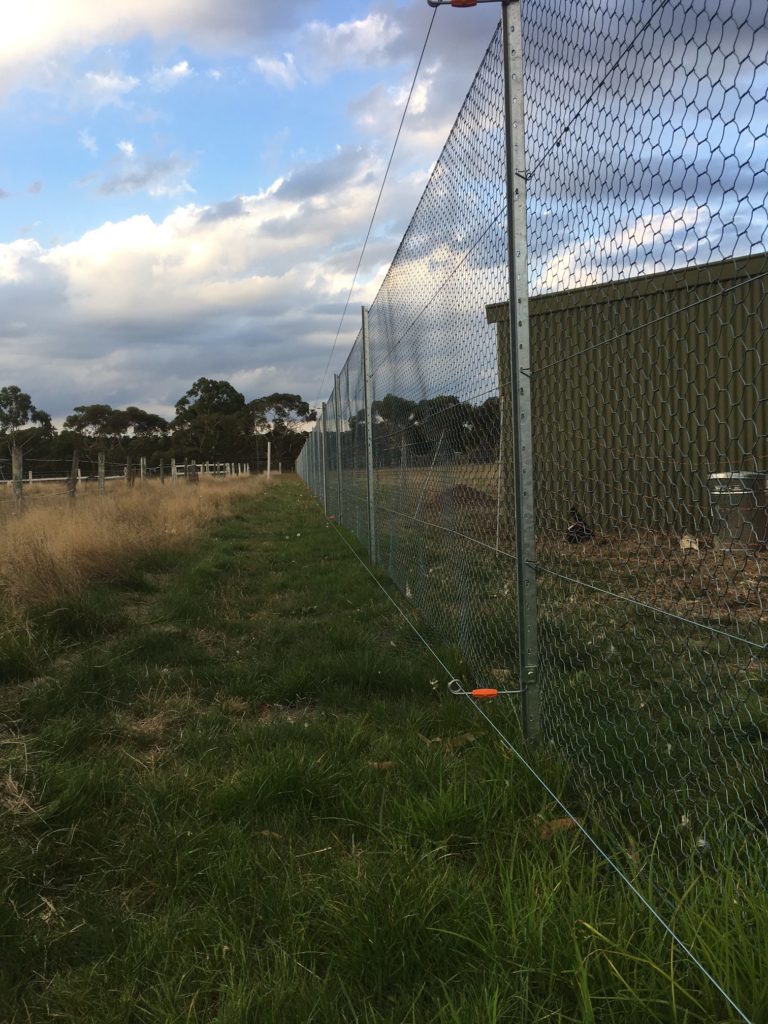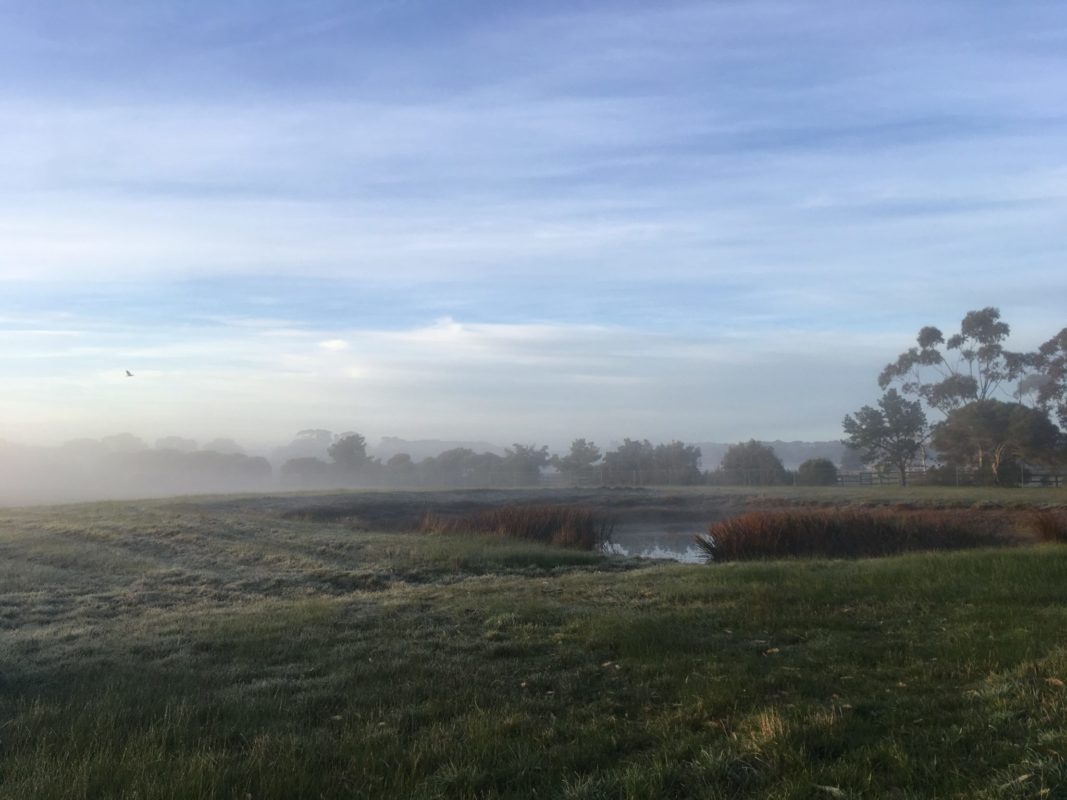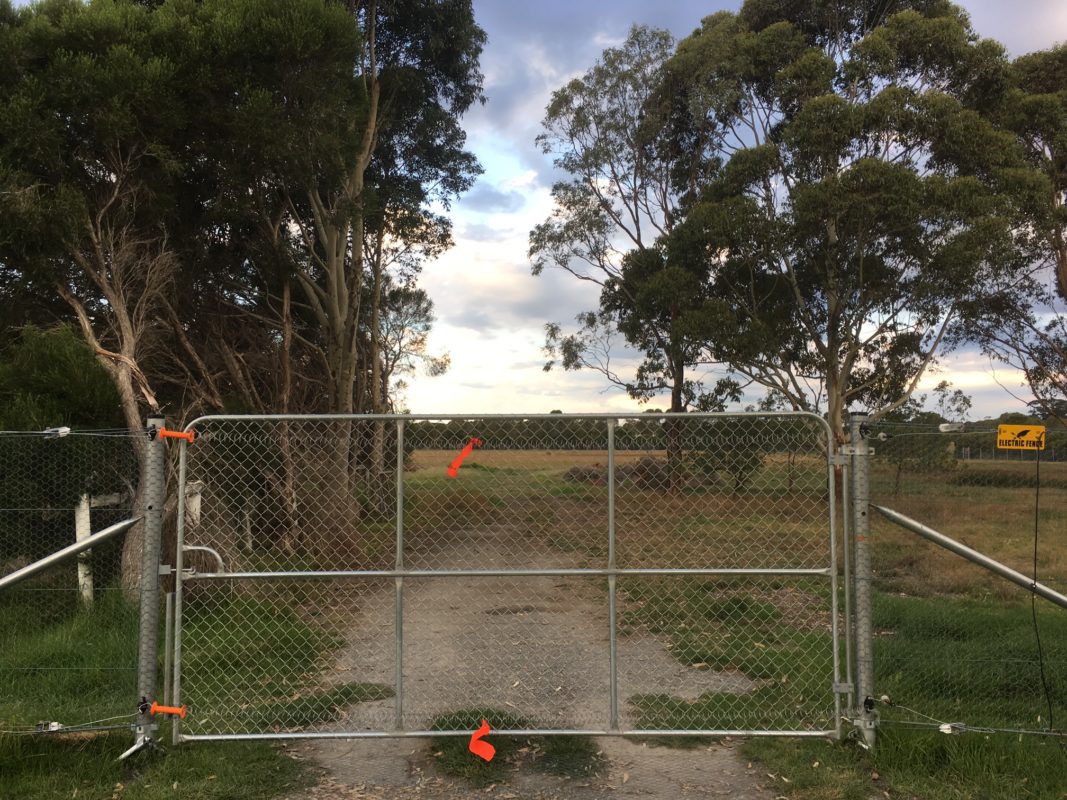At long last we have a completed fox proof fence. And boy does it look good! Made from quality Australian made steel, this all-metal fence blends quite well into the surrounding vegetation and it will provide much needed protection to our ducks (and lambs, geese, chickens etc in the future).

The whole process to start the fox proof fence, and get it up and running has taken a long time. We started investigating what type of fence to get in about July 2016. There were a range of options to try, with treated pine posts, cypress posts, hardwood posts and many electric fence designs as well to take into consideration. We decided on the all-steel option for a couple of reasons:
- Because the all-steel option gave us more flexibility with organic certification. Using treated pine (which often contains copper chromium arsenic (CCA), is complicated and can interfere with certification. While we haven’t decided whether to head down the certification path just yet, it’s always worth keeping it as an option.
- Steel was relatively price competitive with the remaining options, had a good long life and is relatively easy to work with without using tractors. We don’t have a tractor now, but we can still work with the fence posts if required.
The leftover wire from our old fence will be reused on our internal fencing. It doesn’t take much fencing to keep ducks together, so a simple post driver and some clips will do the job for now. I have already set up some internal fencing with the recycled wire, and it’s working well – even in the face of some very heavy winds.
One strong recommendation is to source quotes from a range of suppliers – the difference in the cost of materials varied by about $5,000. Also, try and negotiate between suppliers if you feel comfortable.
The total area covered is about 15 acres, and this will give us the flexibility to move animals within those 15 acres with relative safety. We can move chickens from one side to the other with no concern for fox attacks. Although it’s important to note that we do have Wedge Tailed Eagles (and snakes) – so we’re not entirely predator-proof!
The fence itself is 180cm tall, with a hotwire at the top and another just 20cm off the ground. This means if there are any foxes/cats/dogs that are snooping around, then they will get a shock – never to return.
Maintenance will include keeping the grass down. It’s already starting to creep up, so it’s something that we will need to make a habit! A fortnightly trim should do the job, so a whipper snipper will be on our list of things to purchase soon.
Exciting times at Heritage Farm. Now that the fence is finished, we can start bringing in more animals safely. Next up: more ducks and our first geese!



Hi Matt, we are starting a five acre duck farm (in the planning stages at the moment). Clearly foxes are one of our concerns. We loved your article on fencing and wondered how much you thought it would cost to surround an area like ours in similar way to you?
Thanks.
Hi Mary,
Fantastic! Ducks are a wonderful animal to have on the farm. Hopefully you have a clear run with permits and planning!
We have a fox and wild dog problem down here and the fence works really well. Of course, there’s no protection against hawks, owls and eagles so just make sure there’s plenty of protection from aerial predators (we had nothing when we moved here).
I would budget for $30,000-$40,000 if you are building a similar fence. Dependent on the actual length of the fence, and the quality of the fencing material used and whether you will do any of the fencing yourself. We didn’t fence anything ourselves on the exterior perimeter. Definitely get lots of quotes on materials and ensure that you find a quality fencer in my opinion.
Hope that helps!
Matt
Can you give me a quote for 1.4 klm please
Sorry Brian. Best to contact your local fencer for a quote.
I need a price for 1.4 k fox fence